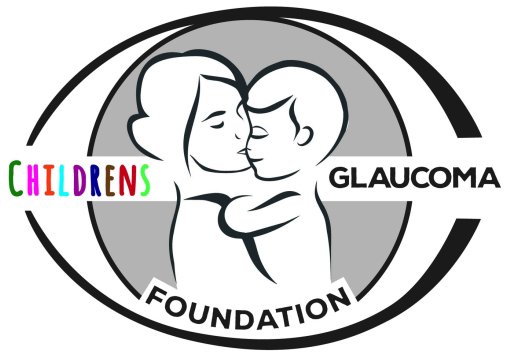About Childhood Glaucoma
Glaucoma is the abnormal elevation of eye pressure with resultant ocular and optic nerve injury causing loss of vision. Childhood glaucoma develops in 1 out of 10,000 children.
Childhood glaucoma may be of primary genetic origin or occur secondary to other pediatric eye diseases. A wide variety of systemic diseases may cause childhood glaucoma and must be considered in children with glaucoma. Most young children show symptoms which can lead to an eye examination, measurement of eye pressure and diagnosis of glaucoma. An increased risk for childhood glaucoma may be suggested by family history or presence of a systemic disease known to be associated with childhood glaucoma.
Diagnosis
Early diagnosis and treatment is essential for children with glaucoma to save their vision. The significance of signs of elevated eye pressure may not be obvious. Parents should look for these symptoms:
Cloudy, enlarged corneas
One eye larger than the other
Light sensitivity
Excessive tearing without discharge
When these warning signs of glaucoma are present, a prompt examination for your child by your pediatrician, family physician or pediatric eye doctor is indicated.
Treatment
Treatment should be initiated promptly after the diagnosis is established. Medical treatment will often decrease the intraocular pressure, but will rarely control it satisfactorily. Surgery is hence indicated to effect permanent reduction of the intraocular pressure.
Medical treatment consists of agents that decrease the rate of aqueous humor formation. Acetazolamide given by mouth (15mg/kg/day) is the most effective initial therapy. Dorzolamide, a topical carbonic anhydrase inhibitor, also deserves consideration; one drop is given two to three times per day. Topical beta blockers also suppress aqueous formation and may be of help:they are given in addition to the topical or systemic carbonic anhydrase inhibitor.
Goniosurgery, filtration surgery, and implant surgery are the three options for the management of congenital glaucoma. In goniosurgery (goniotomy, trabeculotomy), the abnormal trabeculum is incised to enhance the passage of fluid into the filtering channels. For many patients with congenital glaucoma this can be a very effective operation. Children with more severe defects of the filtration channels often do not respond to goniosurgery, and filtration procedures may be required to bypass the malfunctioning system, creating a new egress passage for the aqueous humor. The results of this type of surgery may be disappointing due to the failure of the new passage to remain patent. When the filtration angle defect is seen on gonioscopy to be mild to moderate, with a visible ciliary body band, angle surgeryis effective in 75% of cases. Repeat surgery in an unoperated area may be necessary to achieve an adequate lowering of the eye pressure. In case of failure of classic filtration surgery, implants (Molteno, Ahmed, others) may be used to drain the aqueous fluid from the eye by way of a silicone tube to an episcleral reservoir.
Treatment of congenital glaucoma is difficult, specialized, and sometimes disappointing. With persistent careful monitoring, however, the outcome of therapy can be viewed with guarded optimism. Attention to occlusion therapy and correction of optical defects are important to prevent amblyopia. Genetic counseling is essential and should rely on the individual family structure and general available statistics.
Community
Excellent support organizations do exist to assist families, including those related to Lowe Syndrome and The Pediatric Glaucoma Foundation Family Associates is an active parent support group for all families of children with glaucoma.
Resources
The following resource links are provided without recommendations implied or otherwise. Children's Glaucoma Foundation accepts no liability in respect to the information presented on these sites.
Aniridia Foundation International: www.aniridia.com
This site was set up to provide support and advice to children and their families affected by aniridia.
The American Academy of Ophthalmology: www.aao.org
The site offers a public information section which describes the symptoms, diagnosis, treatment, and surgery risk factors for adult glaucoma. Low vision resources for children are also discussed.
American Association of Pediatric Ophthalmology and Strabismus: www.aapos.org
This site is designed as a resource for pediatric ophthalmologists, health care professionals and the general public in order to help promote better eye care.
Glaucoma Research Foundation: www.glaucoma.com
This foundation is a national non- profit organization dedicated to the protection of sight. The web site includes a FAQ on glaucoma section, access to a free newsletter and fact sheets, as well as an interactive section for which you may register free of charge.
Lowe Syndrome Association: www.lowesyndrome.org
This association is an international organization dedicated to helping children with Lowes Syndrome. Half of these children have glaucoma, as well as the other features of LS.
American Academy of Pediatrics: www.aap.org
This site offers a comprehensive collection of parenting advice, online forums, and pediatric news and information. It is meant to supplement information given by the child's pediatrician.
National Eye Institute: www.nei.nih.gov
This website provides information for patients and their families so they can better understand the disease. It describes the symptoms, diagnosis, and treatment of glaucoma - mainly open angle glaucoma. There are several helpful drawings of the eye on this site.
National Library of Medicine's Medline Plus: www.nlm.nih.gov/medlineplus
This is a reference website that provides free access to the Medline databank.
National Organization of Rare Disorders (NORD): www.rarediseases.org
The site provides keyword searchable information on many rare diseases including aniridia. The organization charges $7.50 for each detailed disease report. Reports are in language easy understandable by patients and families.
Pediatric Glaucoma and Cataract Family Association: www.pgcfa.org
This is an association of parents and professionals dealing with the daily challenge of pediatric glaucoma. The site intends to provide both information and support. The association has a newsletter.

